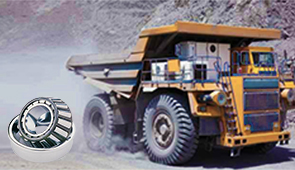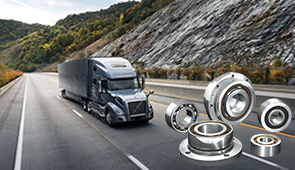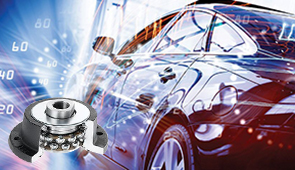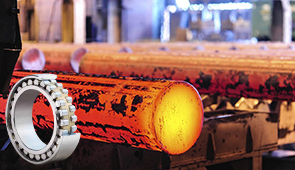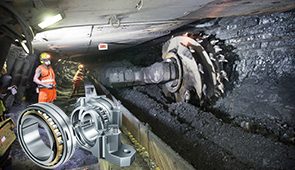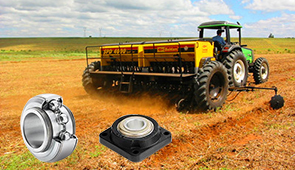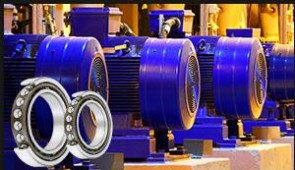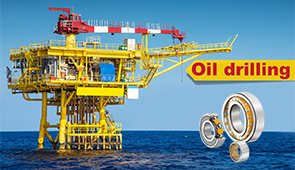Key Applications of Bearing and Seals in Systems
Bearings and seals are two components that almost every modern mechanical and engineering system cannot be overlooked. These components are used in mercury instruments and domestic appliances to reduce friction between rotating parts, increase mechanical efficiency, and enhance assembly performance. The usage of these components spans automobile, aerospace, and manufacturing industries as well as energy, which are the major industries of today and in the future. The author is interested in understanding the primary role of bearings and seals, their functions, and the evolution of technology that alters their characteristics. Resolving the operational efficiency problem of heavy machines and protecting fast-rotating electrical motors, bearings, and seals are significant constituents of many systems we use so that we don’t have to worry about them.
What are the primary functions of bearings and seals in mechanical systems?
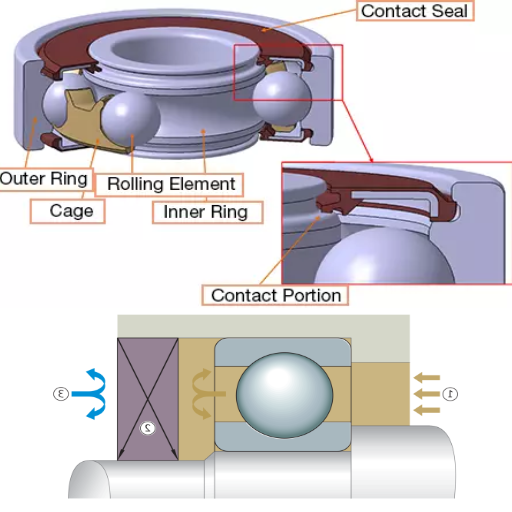
How do bearings facilitate motion and reduce friction?
Bearings allow components to rotate without an increase in friction by providing a low-friction interface surface, which in turn allows for the efficient distribution of loads. They operate on the principle of reducing the interface between moveable elements to the barest minimum so that the resistance and the wear are very low. The significant technical characteristics which substantiate their functional efficiency include:
Load Rating (Dynamic and Static): This describes the maximum load a bearing can withstand in its rotating and non-moving conditions whilst being operable. This is important in ensuring the integrity and serviceable life of the system, which is subjected to a range of operating forces.
Friction Coefficient: This indicates how well the bearing aids turning motion by limiting resistance, that is, the value is approximately between 0.001 to 0.003 for high accuracy bearings.
Operating Speed (RPM): This measurement indicates the ideal number of revolutions per minute at which the bearing should work for optimum performance without overheating and causing most of its parts to wear out.
Material Composition: For these advanced materials, chrome steel or ceramics enhance degradation over time, corrosion, and degradation due to overheating.
Lubrication Requirements: Good lubrication reduces wear and tear, increases the time of service, and is especially effective in critical pressure zones or when the bearings’ speed changes.
These parameters ensure that the bearings operate in the required manner, guaranteeing that motion is intact and energy is optimal whilst maintaining the system’s integrity during the operation.
What role do seals play in preventing contamination?
Seals are fundamental to the bearing system because they prevent contaminants, such as dust, dirt, and moisture, from entering the system, which can damage it. This sealing feature is vital because it preserves the bearing’s operation and extends its lifespan, especially in harsh conditions. Seals also assist in preventing lubricant leakage from the bearing, enabling efficient operation while minimizing abrasion.
Sealing Material: Materials such as PTFE, nitrile rubber, or silicone rubber demonstrated the expected performance after exposure to elevated temperatures or harsh chemicals, thus making them suitable for use.
Temperature Range: Seals differ in their operating temperature range, where some can operate between -40F to 300F along the scale of Celsius as an option depending on the purpose a given seal fulfills.
Pressure Withstand Capacity: In average practices, seals will bear upto 0.3MPa of pressure during dynamic sealing and even less during static sealing.
IP Rating (Ingress Protection): Seals can significantly contribute to the entire system ratings, guaranteeing thorough waterproofing and dust intrusion to IP67 or IP66.
Seal-Lip Design: This configuration offers a variation in sealing efficiency, comprising single or double lips. The double-lip seal is best suited for more contaminated environments.
Adequate seal design can unquestionably reduce the contamination levels in the systems, increasing efficiency, requiring less maintenance, and extending their lifetime.
How do bearings and seals work together to enhance system performance?
The relationship between bearings and seals is symbiotic, as they ensure that both the movement and environmental problems are effectively solved, boosting the system’s performance. When constructed, bearings facilitate the minimization of friction and support rotational movement and/or a linear one, which allows for smooth and seamless functioning under defined load and speed parameters. However, the seals, on the other hand, fill this gap by ensuring that no contaminants get into the bearing assembly while preventing the escape of any necessary lubricants.
The combination of these technical parameters can demonstrate the characteristics of each, including:
Load Capacity: Bearings must bear radial and axial loads without deformation, while seals can only maintain their structure under this load.
Friction Coefficient: Seals, in addition to the low friction state already present in mechanical systems, encourage low friction levels during dynamic conditions, adding to this burden.
Speed Rating: It states that the rated RPM of the bearing must meet the maximum speed of the seal where permanent damage to the seal will occur.
Temperature Range: The operating temperature of the bearings and seals depends on the system’s ambient temperature. The bearings can withstand specific temperatures, ensuring their reliability and stability.
Ingress Protection (IP) Rating: Some seals are so robust that they are the same as the bearings with an IP67 rating; they prevent them from being affected by dirt or water infiltrating the assembly.
With the right installation procedure, seals and bearings can function well as a single unit, enhancing consistency and performance of equipment while making maintenance more straightforward, which is something that almost every mechanical and industrial application skills.
Which industries rely heavily on bearing and seal technology?
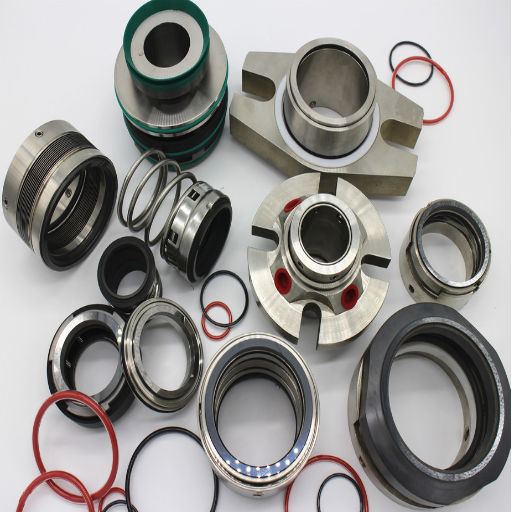
What are the key applications in the automotive and transportation sectors?
Bearings and seals are essential parts within the automotive and transport industries and have various applications. Among these applications, we find:
Wheel Bearings: These are built to control radial and axial forces, making smooth wheel rotation operations in place. As for its main parameters, such bearings may support a weight of 3000 kg and can work at a rotation speed of up to 10000 rpm, depending on the type of vehicle.
Transmission Systems: The bearing facilitates gear movements, while the seal prevents the lubricant from leaking. Gear lubricants help enhance the mechanical components, as their operating temperatures are between 150 and 200 degrees Celsius. Using ceramic and steel materials helps with heat resistance.
Axle and Driveshaft Assemblies: Bearings are used to handle the torques, whereas seals are used to cover the dust and water. The durability of components is boosted by using the IP68 seal combination as it makes various operations easier.
Electric and Hybrid Vehicles: The high rotation of motors causes an increased friction thereby affecting the performance, however specialized bearings help counteract this. Furthermore, seals also help in preventing electric leakage at high rotations of more than twenty thousand.
Such applications improve efficiency, safety, and reliability within the automotive and transportation sectors for traditional and modern vehicle requirements.
How are bearings and seals used in agricultural machinery?
Bearings and seals are integral components in the maintenance of agricultural machinery, which works in adverse mud, dust, and temperature conditions. Most rotary parts, such as shafts, wheels, and blades, operate under motion with cut-down friction through bearings. For instance, deep groove ball bearings and spherical roller bearings are commonly used, and they have high load capacity and contamination-resistant properties.
Conversely, seals prevent dirt, moisture, and other harmful objects from entering the bearings, increasing their life even in highly adverse conditions. Seals made of nitrile rubber or polyurethane are common in agricultural machinery. They are highly resistant to dust particles and have a wide temperature range.
Technical performance includes:
Heavy-duty bearings that can accommodate axial and radial loads above 20 kN, i.e., dynamic load ratings above 20 kN.
Agricultural equipment works in temperatures ranging from -20a to +120.
The sealing systems of IP67 are good enough to guard against water and dust ingress.
These components are crucial for the functioning and performance of tractors, harvesters, and plowing systems, which are essential for agriculture.
What role do these components play in manufacturing equipment?
In my opinion, cam followers and similar parts form the essence of accuracy and automation in present-day tools and equipment used in manufacturing. They fully apply geared couplings to transform a rotary motion to a linear one, essential in various operations such as material handling, assembly, and even processes like cutting. Their geometry enables them to maintain fluid and precision motion that would enhance the efficient functioning of the machine whilst reducing idle time. For instance, in places with heavy industrial usage like production lines, cam followers placed with needle and roller bearings are preferred due to the high loads and extreme conditions they can bear while reducing friction efficiently.
Even more so, I am impressed by how these cam followers and other related components can take the respective manufacturing processes’ repeatability and precision to higher levels, in most cases, even at 2u or less absolute error. As a rule, such machines use CNC controllers, and the need for precision in cam profiles is key to the performance of the milled/shaped component. Sturdy materials such as case-hardened steel or ceramic composites make the components durable even in highly demanding environments. For example, most systems need cam followers with 10mm to 50mm diameters depending on the load and the route the motion needs to follow. This versatility enables its applications to range from automotive to electronics manufacturing, with specific designs for particular industries.
Apart from accuracy, these components also contribute to the automation of manufacturing equipment. Furthermore, the need for manual interventions is reduced as cam followers achieve incredible production speeds by facilitating synchronized rotations of several parts. As far as I’m concerned, using cam followers to pick and place robots is very illuminating. The gentle motion implants cam followers to hold and move the delicate elements without damage. Integrating these components and automation technologies accelerates production processes and, in turn, enhances reliability while being more cost-effective in the long run.
What are the different types of bearings and seals available?
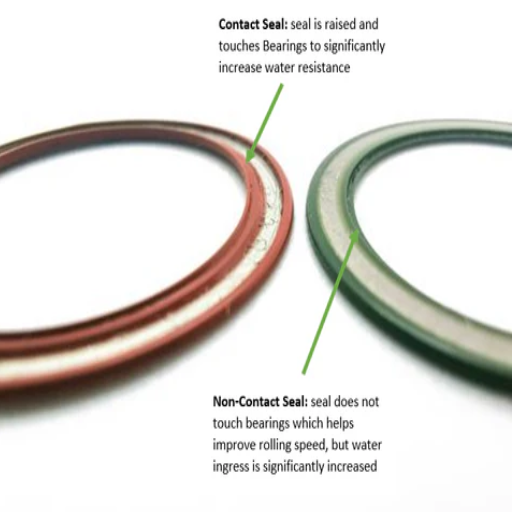
In what ways do ball bearings differentiate from other types of bearings?
I think ball bearings are unique because they are multidirectional in that they are radial and axial, particularly for applications requiring a very high speed. It is important to note that while roller bearings utilize cylindrical elements, ball bearings use rolling elements known as spherical balls. This design geometry allows for a minimized contact area, which reduces friction and facilitates high speeds. For instance, a standard deep groove ball bearing can work at speeds of approximately 20,000 RPM, thus making it very useful in electric motors or even sophisticated measuring devices. This would, however, mean that the contact area distribution with the ball bearing has a lesser load capacity than the roller or needle bearing where the contact area is distributed.
The distinctions become even sharper when putting needle bearing aside. As for roller bearings, they are equipped with elongated cylindrical rollers and are classified as needle bearings. The structure of their construction provides the largest possible contact area so that it would be best applied in small spaces but with heavy radial loads, such as in automotive driveshafts or gearboxes. In contrast, ball bearings find their best applications in systems that require low friction while having smooth motion. I see the general purpose of ball bearings as quite interesting. They are easy to come across and are offered in varieties such as single, double-row, or angular contact for various requirements. For example, in the case of machinery that requires the highest degree of accuracy, angular contact ball bearings are widely used since they can support both axial and radial loads at the same time.
Ultimately, the correct bearing or bearing type will be determined by the application requirements they wish to satisfy. In cases where the most significant speed is to be maintained while generating as little friction as possible, ball bearings would usually be the most appropriate choice. Nevertheless, when heavy-duty performance with excellent load-bearing capacity is needed, it might be more logical to use needle or roller bearings. Understanding the differences in the bearing designs and the specific performance outcomes such bearings produce will help select the most suitable type of bearing for the intended application.
What advantages do rubber seals offer when compared to metal seals?
In my perspective, the foremost advantage of rubber seals is their usefulness in various applications that must be flexible and adaptable. Due to the sources of rubber used in its formulation, rubber seals can stretch and fit snuggly around the corners of the seal, even when there are minor inconsistencies on the sealing surfaces. This makes rubber seals particularly useful in applications where fluids or gases must be contained within a low to moderate-pressure area since the seal will allow maximum pressure transfer without generating any leaks. In addition, depending on the rubber used, the standard range of nitrile or silicone rubbers can tolerate temperatures anywhere within the range of -40 degrees Celsius and 200 degrees Celsius. This is especially beneficial for the automotive industry or HVAC systems.
Rubber seals, however, are not entirely placed aside when it comes to electrical engineering. Their properties are beneficial if some wires are intended to go through a surface like a wall. Due to magnetic and speed issues, ferrite-based transformers tend to have a horizontal aesthetic. Synthetic rubber is embedded into a soft casement with one end tapered so that it can be easily slid into the seal. Shapes are not significantly constrained and can be easily molded during manufacturing.
Rubber seals also effectively circumvent shock waves that can damage or even sever wires embedded in electrical tape. On the other hand, rubber gaskets tend to dry when exposed to extreme conditions, making them viable for use in aviation and valve systems – inhospitable environments (as can be imagined). But the fantasy that is a metallic seal, with its myriad applications such as aerospace, is a long touch away. With the rubber-to-metal mass ratio, using the latter in pumps and hydraulic seals makes more sense.
When do oil seals work better than grease seals?
From my point of view, oil seals are the best configurations in situations requiring a seal to be dynamically sealing rotating shafts lubricated by a liquid, such as a shaft or machine spindle. Oil seals are engineered to keep a liquid lubricant such as motor oil inside the system and to exclude and prevent contamination by dirt or moisture entering the system. This explains why they are best for high-speed equipment like automotive engines and industrial gearboxes. For example, an oil seal with fluorocarbon lip can withstand 250°C and still be helpfully sealed under pressure.
On the other hand, grease seals are best suited for systems using semi-solid lubricants or greased systems. Their efficiency in sealing liquid lubricants is poor because grease has a terrible flow rate or very high viscosity compared to oil. Oil seals are routinely designed to deal with a high volume of flowing and circulating lubricating fluids, as with pump or turbine components. Furthermore, because they can disperse heat more effectively than grease, oil seals generally outperform other seals when it comes to wear and tear in both static and dynamic settings.
A critical consideration in selecting oil seals for me is the maintenance that they will require. Even though the maintenance of oil systems may be more complicated because oil has to be checked and replenished from time to time due to its deterioration, they are more reliable because they offer smoother flow and reduce friction and wear of parts. Grease seals, on the other hand, tend to be more wear-resistant. Still, they are used in static or low-pollution applications, such as farming or truck axle equipment without continuous lubrication. In the end, there is no doubt that the requirements of your application, such as rotational speed, heat generation, or the method of lubrication, will help you decide whether the oil seals or grease seals are more appropriate for you.
How do you select the correct bearing and seal for your application?
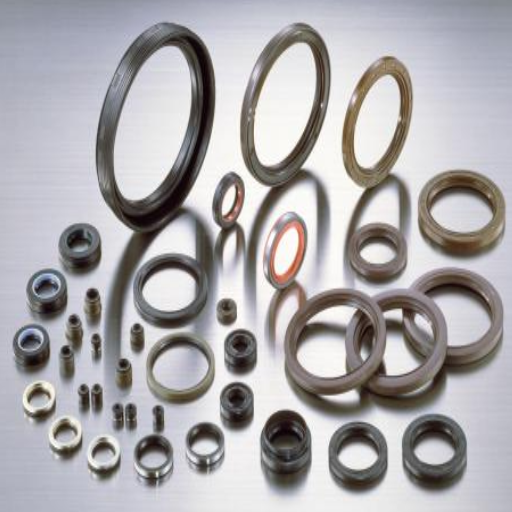
What should you consider when selecting the size and material for bearings?
Choosing a bearing size and material involves several thorough considerations from various perspectives to enable the bearing to perform maximally for a long time. The load capacity is one such crucial consideration. When used, bearings can support both the radial and the axial loads, but many loads deform or spoil the bearing during the process. For instance, a heavy-duty industrial conveyor belt may require larger bearings with a high dynamic load rating of over 50kN to withstand extended periods of stress. On the other hand, for lighter uses like fans or little motors, a lower load rating and a smaller bearing will be enough.
Material-based selection is also equally imperative because it profoundly influences the bearing’s compatibility with the operational conditions. Stainless steel bearings perform well in corrosive environments or applications where cleanliness is essential, like food processing equipment. For environments where high temperatures prevail, ceramics or high-temperature resistant hybrid bearings work just as well and may enable high heat exposure of around 800’C and higher. Remember that bearings made of polymers or composites are low in mass and do not corrode. So, they are best suited in situations with low-range, short-duration operations.
Also, your choice should be influenced by other factors, such as speed of rotation and lubricant requirement; for high-speed operations like turbines, precision steel or ceramic ball bearings can be used as they reduce friction and permit rotational speeds of up to one hundred thousand revolutions per minute. Furthermore, the operational environment, such as dust and water exposure, affects the requirement for extra sealing or coating to enhance the life of the bearing. By using bearings of appropriate size, material, and geometry pertinent to the problem faced by the application, you assure not only reliability but also the enhancement of the performance and durability of the mechanical system.
In your experience, what role do environmental conditions play in seal choice?
Environmental parameters likewise have been of utmost importance, in my opinion, in the selection of the most suitable seal for any application. Temperature is often cited as the primary parameter to address. For example, sealing components made from nitrile rubber do well in moderately cold to warm conditions (-40 degrees Celsius to 120 degrees Celsius). However, environments within engines or industrial furnaces best employ fluorocarbon seals, which are made for high temperatures exceeding 250°C. Conversely, cryogenic systems and the like may also require elastomers that will not lose their flexibility at -60°C or below, and silicone gaskets or seals may be needed.
Seal performance is also affected by moisture content and contact with water. Seals with high water resistance qualities, such as EPDM rubber, are recommended in wet or submerged conditions. Such seals are moisture resistant, swell, crack, and deteriorate slowly and, therefore, can be used in pumps or marine equipment. On the other hand, seals with broader exposure to chemicals must contain materials that can resist chemical agents. For instance, seal materials used at chemical process plants or fuel systems may contain PTFE (polytetrafluoroethylene) as it is highly resistant to acids, oils, and solvents.
Such conditions suggest that the seal selection should be based on the particular factors of the seal to the conditions under which it will operate. Multi-material seals and seals with added coatings are more efficient for extreme or different operating conditions. With the correct design and seal material fitted for the working conditions on the seal, a more robust cartridge seal is produced, and additional maintenance and time wastage will be avoided.
What are the advantages of the bearing or seal kits?
The bearing and seal kits have some practical advantages, especially in maintenance and repair. One significant advantage is convenience. The kits are made so that all the components, including bearings, seals, and, in some cases, other hardware, such as nuts and bolts, are sourced, packed, and supplied for a specific system or application. This removes all the hassles of hunting for every part and ensures that they all fit correctly, which saves time and effort. For example, when carrying out auto repairs, a wheel bearing and seal kit comes with bearings and seals that are meant to work together, so there is less risk in changing them out. It also enhances the quality of the repair as there is less chance of them being cross-threaded.
One other striking benefit of using the kits is that they are not expensive. While purchasing the individual parts might seem economical, the cost of incompatibility or wrong selection, which means repurchasing the same part, adds up. Here, it must be noted that these kits are semi-finished goods assembled for a specific application, which means they already have components designed to enhance performance and durability. For instance, in industrial bearings, a bearing kit that contains pre-lubricated bearings composed of high-temperature seals could withstand up to 200 ℃, which helps reduce wear and tear and prolong service intervals—all the above boosts reliance. As a result, breakdowns are usually lower, and maintenance costs decrease over time.
These kits also provide a performance advantage as they are validated in a complete configuration. Good alignment of the bearings and seals greatly minimizes friction and cross-contamination and improves overall smooth functioning. Whether an agricultural machine deals with dust or a marine system operates in wet conditions, a kit ensures that every item is designed for that environment. For example, the choice of bearing and seal kits is not simply a matter of ease of use. It is a focus on performance and sustainability.
What are the best practices for maintaining bearings and seals?
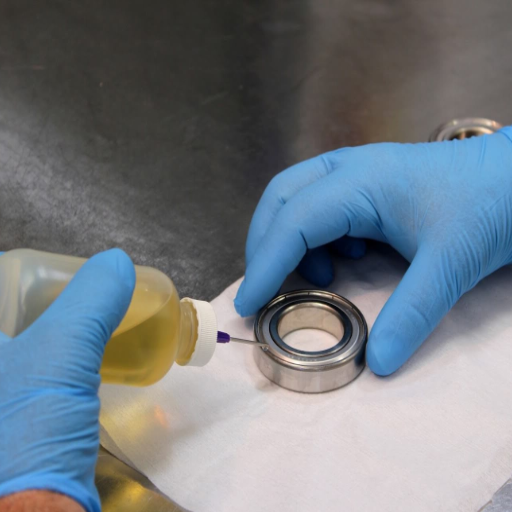
What is the recommended frequency for checking and replacing bearings and seals?
In my opinion, the wear rate of seals and bearings, and consequently the necessity to replace them, is determined mainly by the functional and operational characteristics of the application. From my experience, inspection, and maintenance should not go beyond twelve months for normal operational utilization at low, moderate conditions. Otherwise, the system seems to develop leakage, making other noises and generating unreasonable heat, which can be taken care of only before a significant breakdown in the system happens. In cases of bearings being applied on fast and heavy working equipment like turbines and conveyor belts, three to six months may have to be the service frequency because the components work under high stress.
Bearings and seals may be replaced if the procedure follows the manufacturers’ guidelines and the material performance specifications. For example, a bearing expected to operate for 50,000 hours under normal conditions may need to be replaced within 5 to 7 years of operational use, depending on load and speed fluctuations. Furthermore, seals like those composed of nitrile rubber elastomers may have faster degradation rates when used in high-temperature and chemical environments. If seals show signs of hardening, cracking, or swelling after inspection, that would be the right time to replace them.
Maintenance strategies become more stringent for bearings and seals working at extreme temperatures, in wet environments, or with chemicals. If bearings and seals are used in chemical processing equipment or marine applications, it would be prudent to service them every few months and replace them once a year as a preventative measure to combat corrosion or other such failures. A reliable maintenance program designed based on your system’s operating conditions will ensure reliability, avoid unnecessary downtime, and even prolong the system’s operational life.
What lubrication techniques can increase the life of these components?
In my opinion, lubrication is probably one of the most straightforward yet helpful techniques that prevent the deterioration of bearings and seals. Applying grease is also one of the techniques, especially for operations at medium speeds. Using grease of suitable quality with a specific viscosity rating ensures a separation that minimizes abrasions and blocks the ingress of dirt particles in critical areas. For example, during the high load applications of industrial presses, lithium-based greases, which can withstand temperatures of -20 °C to 130 °C and are rated for extreme pressure, are often used. Typical grease exchange cycles controlled per the manufacturer’s guidelines help maintain efficiency without interruptions.
Grease is less effective at higher speeds or high temperatures, so oil baths or oil circulation systems are used. These techniques provide a continuous clean film of lubricants to the components, thus removing heat more efficiently than grease. For example, synthetic oil with specific viscosity ranges appropriate for retaining flow, and film thickness under severe temperatures and load parameters is often used with turbines rotating at high speeds. Controlling the oil against contamination and maintaining the correct quantity of oil is essential to fully realizing this technique.
Automatic lubrication systems find their best application in complex machinery or hard-to-reach parts. Such systems always provide correct and uninterrupted lubrication, eliminating the chances of over- or under-lubrication. For instance, on large mining machinery, centralized systems can pump out required volumes of grease to many bearings and seals at once, even in motion. This significantly reduces the wear of the components and maintenance downtime. By customizing lubrication procedures according to the requirements of your application, you can maximize the durability of your components and the system’s reliability as a whole.
How can you fight contamination and achieve optimum performance?
Preventing contamination is paramount to the efficient performance of bearings and seals. One of the most efficient solutions is knowing numerous protective covers and shields. These extra layers stop dirt and water from reaching the system. For instance, seal covers made of metal or rubber augment the protection of dusty outdoor equipment from abrasive particles. Also, sealing features employing labyrinth or dual-lip designs significantly improve protection by shielding critical internal parts from exposure.
The selection of materials is equally important as it will reduce contamination risks. Seals formed from fluorocarbon rubber (FKM) and PTFE, for instance, have been cast as chemically and thermally stable and shrink-free and are suited for extreme industrial or chemical processing environments. Conversely, bearings are commonly encased with nickel plating or encased into stainless steel to enhance corrosion resistance, especially in a marine or moist environment. Combining these strong materials and adequate lubrication constructs a system with low wear and long working life.
Regular maintenance checks are also a requirement. Periodic inspections allow the detection of unsightly grease or blackened seal edges, which can be the initial sign of contamination, and take the necessary action before it becomes a more significant issue. Cleaning and lubricating the parts more frequently reduces the chances of contaminants getting consolidated, allowing the components to work effectively. For systems under extreme conditions, a contamination detection system (for instance, sensors that measure particle size in lubricants) can give instantaneous state information about the part. If you combine these protective measures, you can reduce downtime, improve reliability, and maximize the performance of the system in its entirety.
Frequently Asked Questions (FAQs)
Q: What is a bearing kit, and what is typically included?
A: Bearing kits are self-contained modules that consist of every component necessary for fitting a bearing. It usually has the bearing, a ksine seal, a spacer, and sometimes grease. Bearing kits are helpful during maintenance and replacement as all the required parts are in one pack and fit together correctly.
Q: How can bearing seals enhance the life of a system?
A: Issues that bearing seals are aimed to solve are dirt intrusion, water intrusion, and moisture intrusion. Such decontamination is crucial, as it assists in sustaining the lubricant’s effectiveness and increases the lifetime of bearings and, therefore, the entire structure. This coverage is critical in retaining the efficiency and functionality of moving parts in many applications.
Q: What factors should one consider when choosing a bearing for a particular application?
A: First, it would be crucial to consider load ratings, temperature ratings, dimensional factors (metric or imperial), part composition (ceramic and steel), seals, lubricants, and so forth when purchasing a bearing. In addition, such factors as bear use comfort, working conditions, temperature fluctuation, and degree of precision should also be considered. Some bearings have additional functionalities, such as high-speed spindling rotation and corrosion resistance for severe working conditions.
Q: In what ways are pillow block bearings different from other types of bearings?
A: A pillow block multiplier is a self-aligning bearing unit consisting of a bearing mounted within a housing made of cast iron or steel. It has a lubricating system and a separator system. It is easy to mount because it was created to support rotating shafts in different industries. However, unlike standard[..] pillow blocks, they are factory assembled and ready to use, which eases maintenance and installation. They are adaptable and can be used in many situations, from conveyor systems to agricultural machines.
Q: What seals are best suited for assembly combinations with bearings?
A: Bearing assemblies with sealing components can be equipped with shaft key solutions, such as lip seals with flexible lips, labyrinth seals with spiral grooves or channels specifically engineered to inhibit the penetration of contaminants, and spring-loaded seals that uniformly maintain contact sealing force. Double-lip seals, which use two sealing surfaces, can perform better sealing tasks. When selecting a seal, the main concerns are environmental conditions, speed, and protection factors needed for that particular setting.
Q: For a standard industrial application, how frequently would you say replacing bearings and seals is feasible?’
A: The replacement intervals set for bearings and seals are, however, determined by many elements, including application and further external working conditions, in addition to the maintenance technique used. In bearings and seals preventative maintenance systems for statutory checks and replacements, an interval of three to six for bearings and seals replacement is more of a rule rather than being the average. Anomalous vibrations, sounds, and heat generation are indicators that bearings need replacing sometime soon. In the more demanding application, it is not unusual for bearing replacements every couple of months, while in less so, it is as expectant for years and years while remaining well taken care of.
Q: Why Should You Invest in Stainless Steel Bearings and Seals?
A: Steel components are prone to rusting, while stainless steel does not stain or rust, dramatically increasing its longevity compared to other metals. Stainless steel bearings and seals have advantages in food processing, pharmacy, and marine industries. It makes them more durable in many ways. These are, however, affluent in price, but their extended age and invulnerability to many outside determinants compensate for the expenses incurred initially. This extends their age, in other words, saves money in the long run. Stainless steel is optimal for operating at high-temperature and high-pressure environments. So, if you are searching for profit, retaining these components would be ideal for any business, especially in harsh conditions.
Q: How are bearings and seals different in the application and features of electric motors?
A: Motors heavily emphasize bearings or seals as the components rotate, which helps and aligns the rotor. If one installs seals, these would prevent any sort of leakage within the system, which is essential. In the case of motors, bearings require radial and axial forces, but in the case of electric ones, comparatively low troops would do the job. The majority of many compact motors require cross-section disorders to be covered and the bearings to be staggered, as a result not enough room is available. These would be electrically insulated bearings and fillers made with materials that would not allow currents to pass. Seals are also located within the case to prevent outside substances from entering the system; otherwise, they would be degraded.
UCTH213-40J-300 with Setscrew(inch)
CNSORDERNO: Normal-duty(2)
TOGN: UCTH213-40J-300
SDI: B-R1/8
SD: 2 1/2
UCTH212-39J-300 with Setscrew(inch)
CNSORDERNO: Normal-duty(2)
TOGN: UCTH212-39J-300
SDI: B-R1/8
SD: 2 7/16
UCTH212-38J-300 with Setscrew(inch)
CNSORDERNO: Normal-duty(2)
TOGN: UCTH212-38J-300
SDI: B-R1/8
SD: 2 3/8
UCTH212-36J-300 with Setscrew(inch)
CNSORDERNO: Normal-duty(2)
TOGN: UCTH212-36J-300
SDI: B-R1/8
SD: 2 1/4
UCTH211-35J-300 with Setscrew(inch)
CNSORDERNO: Normal-duty(2)
TOGN: UCTH211-35J-300
SDI: B-R1/8
SD: 2 3/16
UCTH211-34J-300 with Setscrew(inch)
CNSORDERNO: Normal-duty(2)
TOGN: UCTH211-34J-300
SDI: B-R1/8
SD: 2 1/8









